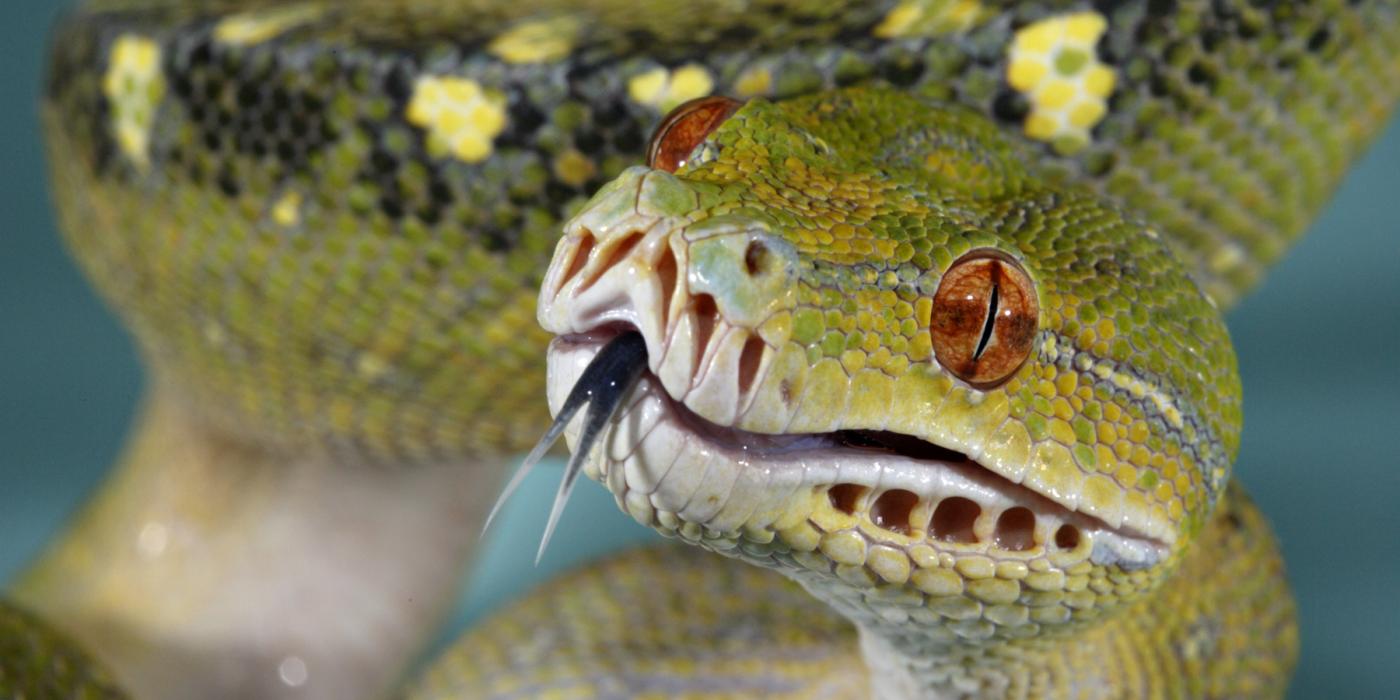How Do Snakes Move Without Legs?
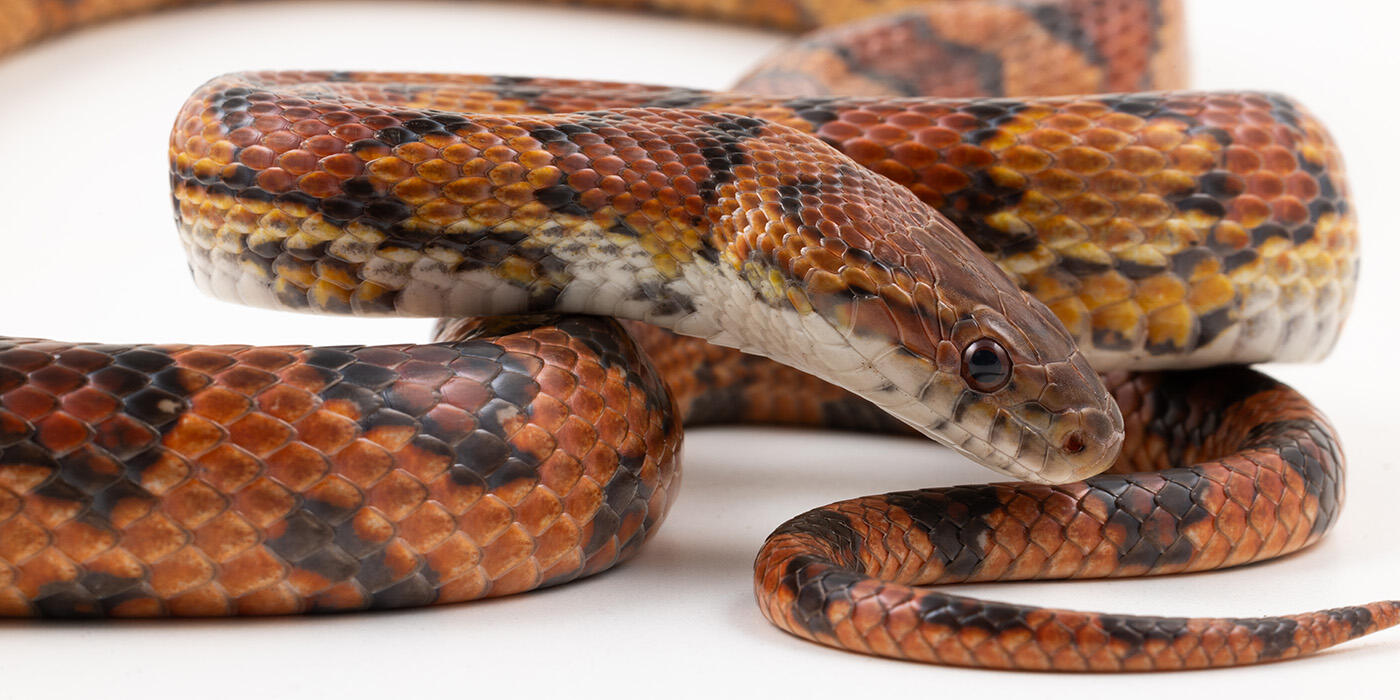
Take a moment and imagine yourself with no arms and no legs. Now think about what it would take to look for food, move to a new place, or find a compatible mate. Challenging, right?
Not if you’re a snake.
Despite lacking limbs, these seemingly simple reptiles have developed a repertoire of adaptations that have helped them navigate along nearly every continent on the planet. So, what’s their secret?
No legs, no problem
If you’ve ever watched a snake slide along a surface, you probably noticed the animal’s long, slender body is covered neatly by a pattern of scales, with the widest on the underside. And if you observed the snake up close, you might’ve noticed muscles that flex and contract in tune with the snake’s movement. You’ve just observed the keys to a snake’s locomotion – or the way it moves itself from one place to another.
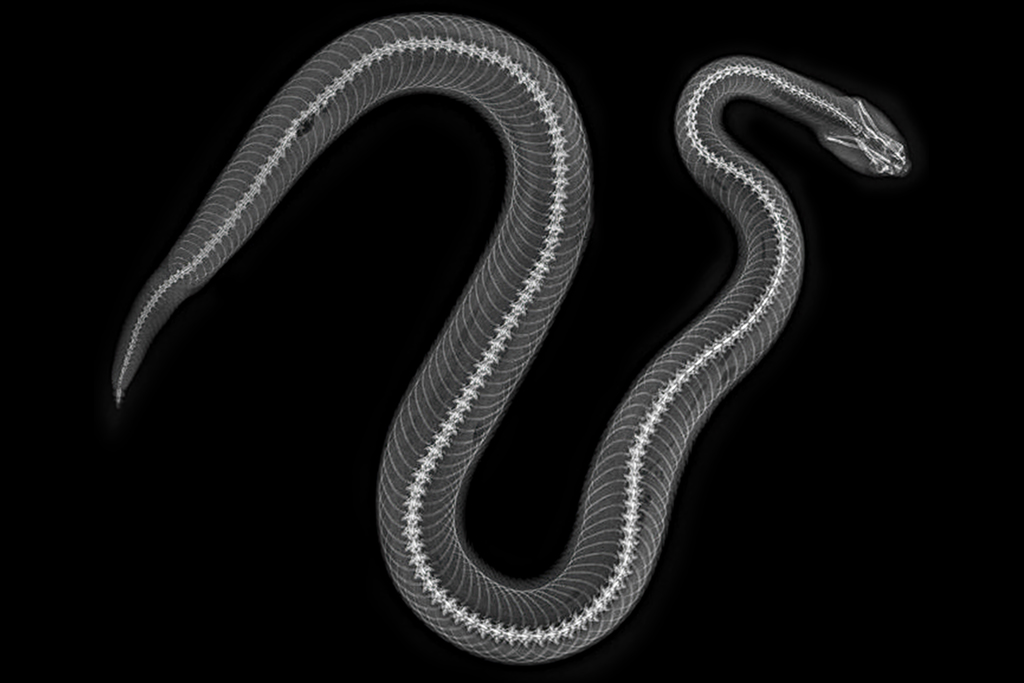
X-ray of a Mexican lance-headed rattlesnake. Depending on the species, a single snake can have around 175 to 400 ribs and vertebrae, connected by 10,000 to 15,000 individual muscles. (Smithsonian)
Snakes are able to travel across surfaces when these powerful muscles work together at different parts along the snake’s body. As snakes move, they shift their weight from curve to curve in coordinated patterns, sort of like how you shift your own weight as you walk by rolling your feet from heel to toe.
But the secret to a snake’s ability to move forward lies in the animal’s ventral, or belly scales. These are the scales that extend along the underside of the snake.
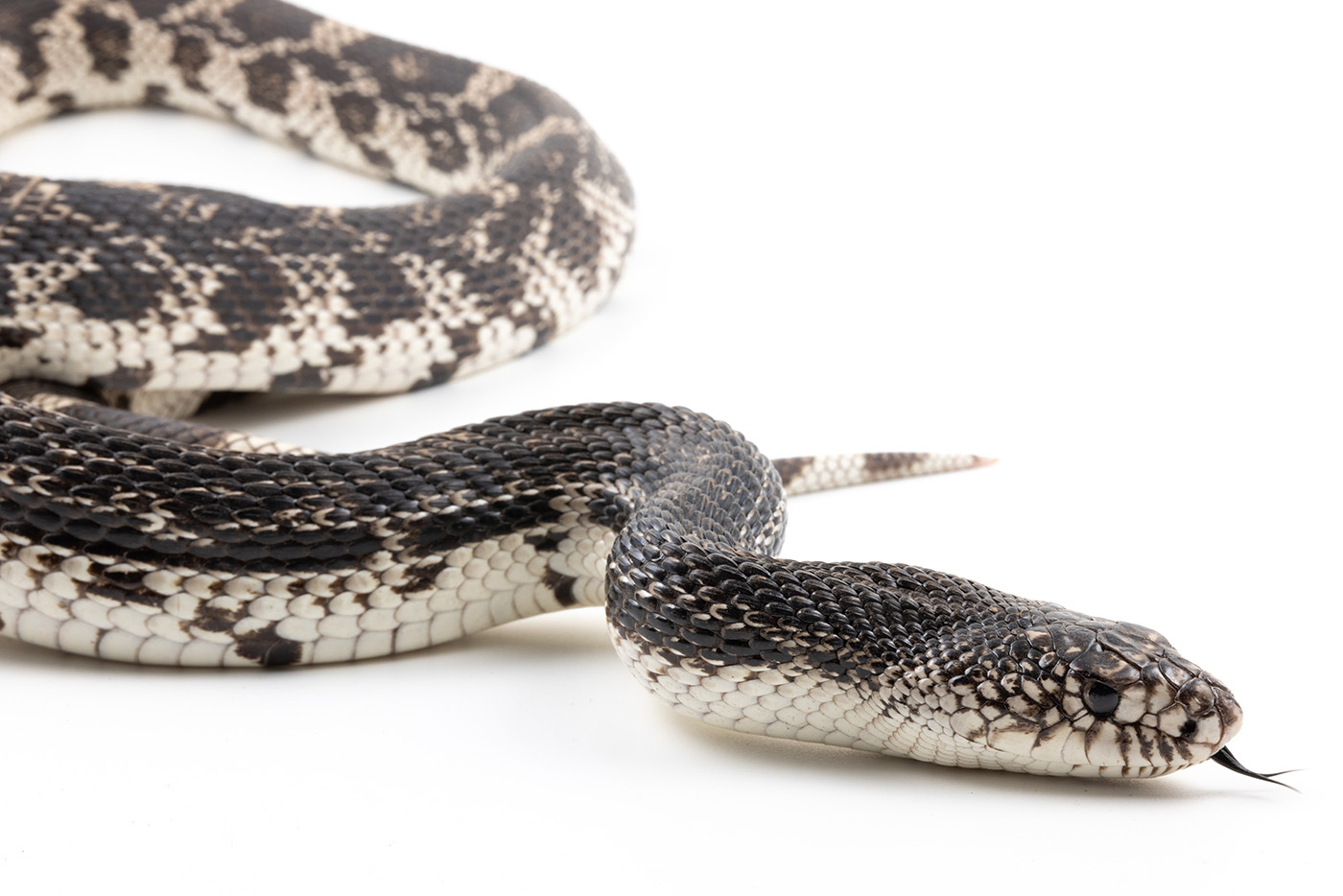
Fun fact: the flat scales on a snake’s belly are dry – not slimy. Snake scales are made of keratin, the same material that makes up hair and fingernails. (Smithsonian/Roshan Patel)
Notice how the belly scales on the Northern pine snake above are wide, flat, and pointing in one direction, kind of like roof shingles?
The ridges in between the snake’s underside scales function like the treads on the bottom of a boot: they can both get a grip on the ground and push off against it. Grip is created by friction between the snake’s belly and the ground. That friction is higher when the snake bends its body and catches its scales against the surface, and lower when the animal straightens and flattens out the ridges on its belly.
When you watch a snake move across a surface, you’re seeing it create traction and push off the ground in some parts of its body, while frictionlessly gliding forward in others. Thanks to its finely tuned muscle control, the snake can generate a wave-like style of movement that appears fluid, powerful, and nearly effortless.
What are the methods of locomotion a snake uses to move?
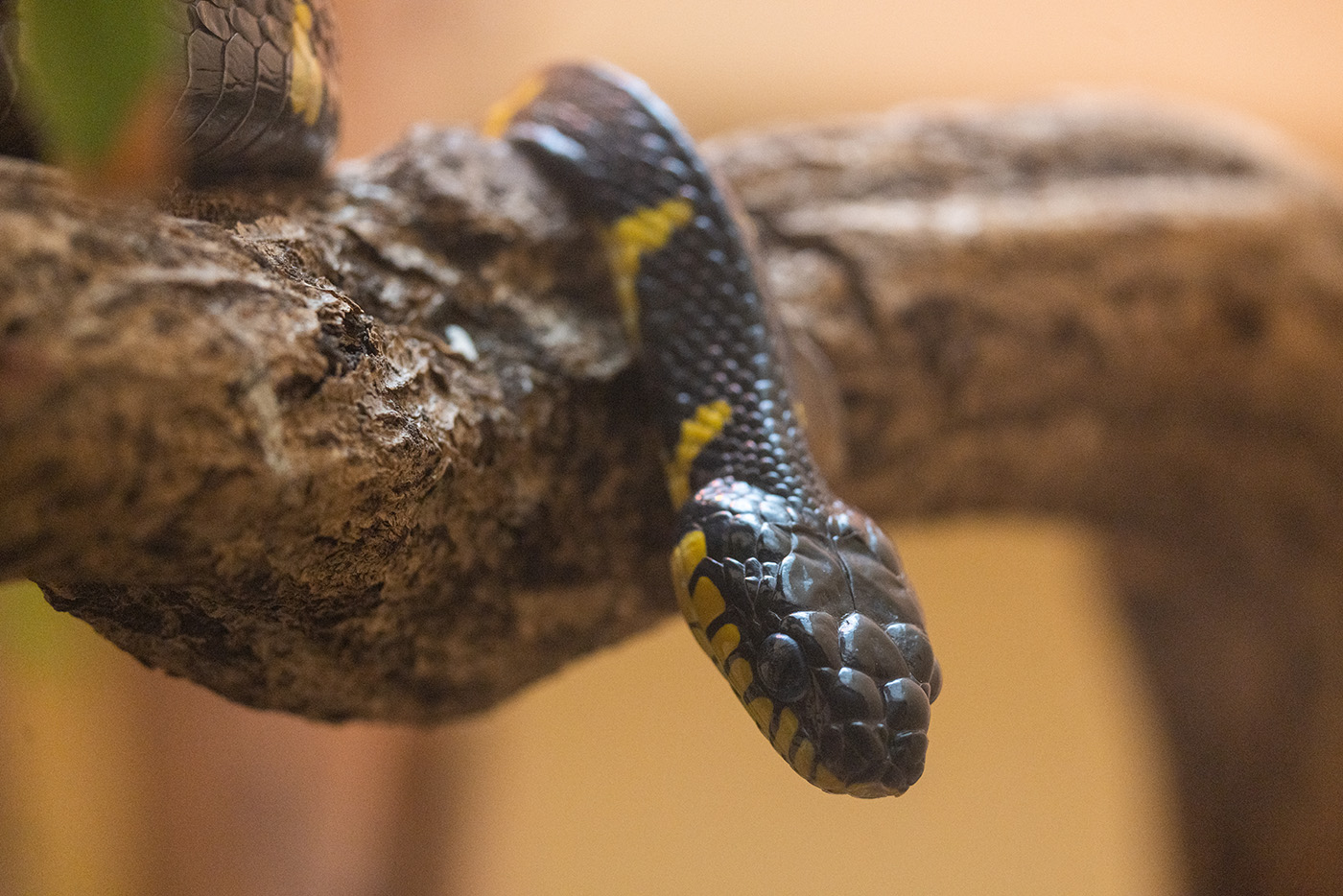
Snakes can be found on every continent except Antarctica. They have adapted to live in a wide variety of environments – some, like this mangrove tree snake, spend most of their lives in trees. (Smithsonian/Roshan Patel)
Pop quiz! What are the four main methods a snake relies on for movement? If you said something like “uh… slithering?” then this next section is for you.
Snakes actually have four main modes of movement. Each mode is specialized for different types of terrain and matches closely with the animals’ lifestyle, habitat and behavior:
1. Lateral (or “serpentine”) undulation
This is the classic, “S-shaped” movement most people associate with snakes in motion. With a rhythmic and alternating movement pattern, snakes position their bodies in a series of undulating curves, shifting their weight onto a series of points along their bodies, and then pushing off against the surface at each point to generate forward movement.
This is by far the most common method of locomotion in all snake species, although it only works well in relatively flat areas where snakes can get a grip on subtle imperfections on the terrain.
2. Concertina (or “accordion”) locomotion
This stop-and-go, bunching-and-unbunching technique makes the snake look almost like an inchworm rotated on its side.
With this motion, the snakes stretch forward and grip with the front part of their bodies, then scrunch the middle parts of their body together to pull the back parts forward. Then, they anchor the rear parts, reach forward with the fronts, and repeat.
This method is especially helpful for vertical movement. Snakes that hunt birds commonly rely on this method for climbing up slick trees and poles where it might otherwise be impossible to get enough of a grip to climb.
3. Sidewinding (or “crotaline”) locomotion
Much like the serpentine movements, sidewinding relies on snakes twisting their bodies into rounded bends. But sidewinding comes with an extra lift: the snakes plant their heads and tails against the surface while thrusting the non-contact parts of their bellies upward to fling themselves sideways.
This strategy is most useful for navigating deserts, where slippery surfaces make it hard for snakes to get a grip. As the name suggests, the sidewinder rattlesnakes are experts at this type of motion – researchers have observed them shifting through the sands at up to 18 miles per hour.
4. Rectilinear (or “straight-line”) locomotion
In rectilinear motion, snakes accomplish the seemingly impossible task of moving without bending their spines. They do this by repeatedly gripping the ground and pulling themselves forward with their belly muscles — which is sort of like if you could lie down on your belly and then lift and drop your ribs and abdominal muscles off the ground to pull yourself forward.
This caterpillar-like crawl might strike you as completely bizarre, but it’s actually an incredibly useful tool for navigating tight spaces. Hunting snakes use this movement to track prey through burrows and tunnels where there’s less room to undulate or sidewind.
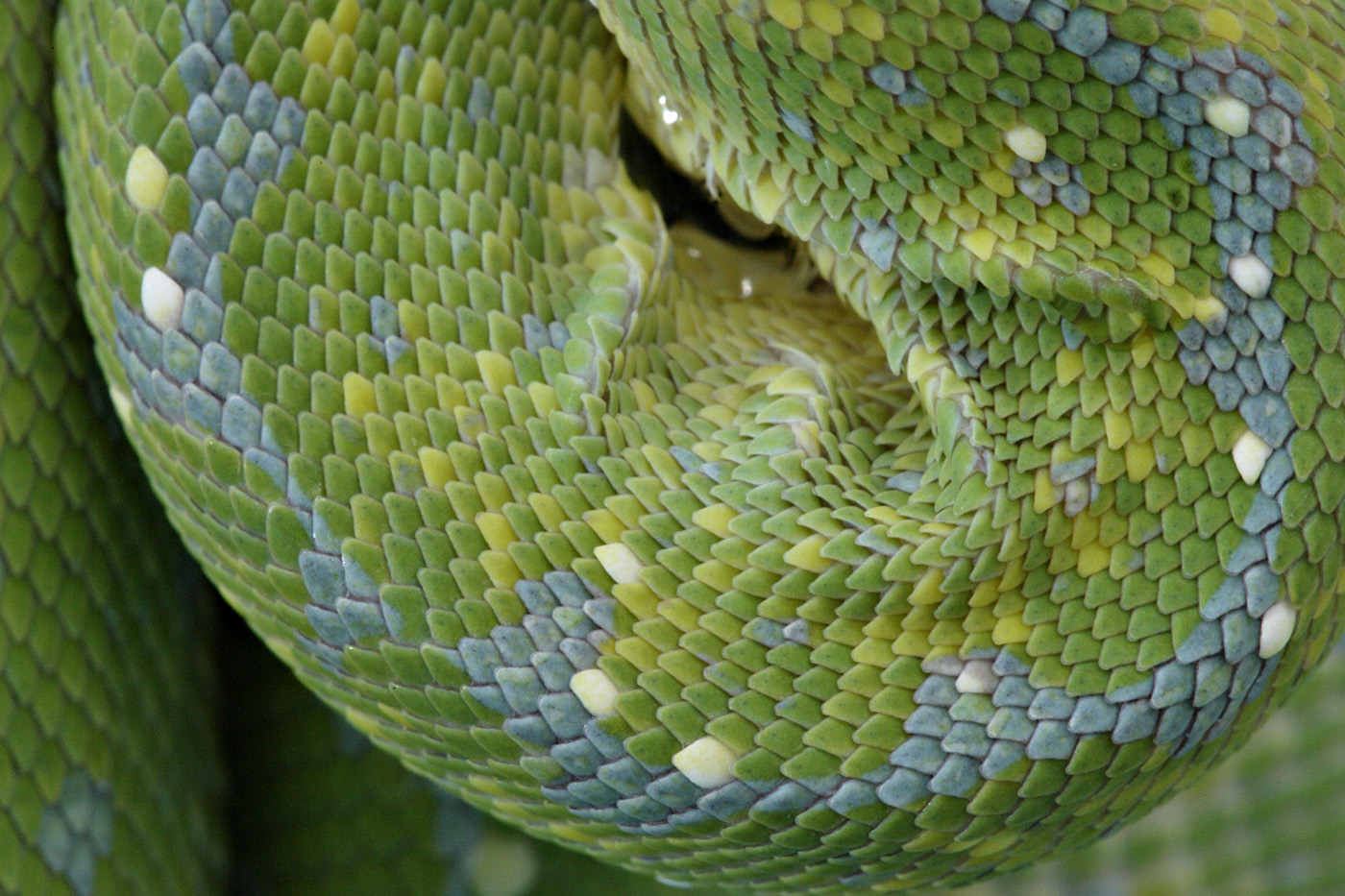
Did you know? As this green tree python matures, the number and pattern of its scales stays the same. (Smithsonian/Meghan Murphy)
Navigating up trees, under water, and through the air
There are over 4,000 snake species around the world, and many have adapted to fill highly specialized roles in their environments. Some have developed unique methods for climbing trees, swimming through water, and even gliding in the air:
- Snakes that live in dense forests, like the brown treesnake, tend to be expert tree climbers. One technique involves the snakes wrapping and gripping the trunk with their strong muscles. Then, they lasso their bodies to propel themselves upwards, and tighten after getting a vertical boost. If these gravity-defying snakes start to fall, they can flex their individual belly scales to catch a grip on tiny projections in the tree bark.
- In the water, snakes use a modified form of lateral undulation. Specialized aquatic snakes, like the sea snakes of the Pacific and Indian Oceans, can swim effortlessly underwater by generating friction as their bodies twist. Some marine snakes have even developed oarlike tails for better control.
- And in parts of Southeast and South Asia, an unusual family of snakes has developed the ability to “fly”—although it’s actually more like gliding. Species like the paradise tree snake can fling themselves from the treetops and glide through the air, landing on branches up to 300 feet (or about a hundred meters) away. By wriggling their bodies mid-flight, these snakes can control their flight path, direction, and generate extra lift … although scientists still aren’t exactly clear about the physics behind it.
How fast can a snake strike?
Snake movement isn’t just about moving from place to place. For example, what happens when a snake throws its weight behind its muscles all at once?
The result is a snake strike—the primary method of attack and defense for many snake species. A snakes’ strike usually involves the animal coiling together tightly, and then using their powerful muscles to rapidly lunge their heads forward before quickly pulling back and readying the next strike. This is especially helpful when the snakes need to defend themselves or capture prey.
Some snakes are lightning-fast predators, with the ability to lunge at a target in just 70 milliseconds, faster than the blink of an eye. Scientists believe this speed is the result of evolutionary pressure: to be effective ambush predators, snakes have to move faster than their prey can react. This may have led to an “evolutionary arms race,” where snakes and their mammalian prey gradually evolved to adapt quicker reaction times to outcompete one another.
For example, while the sidewinder rattlesnake can strike at the incredible speed of 100 milliseconds, a team of researchers found the desert kangaroo rat can defend itself by leaping and kicking away the lunging predator in a mind-boggling 38 milliseconds.
There’s still plenty more to learn about how snakes move, hunt, and survive in an ever-changing world. At the Reptile Discovery Center at the Smithsonian’s National Zoo, you can see more than 70 species of reptiles and amphibians that showcase the diversity and beauty of these amazing animals. Plan your visit today!
